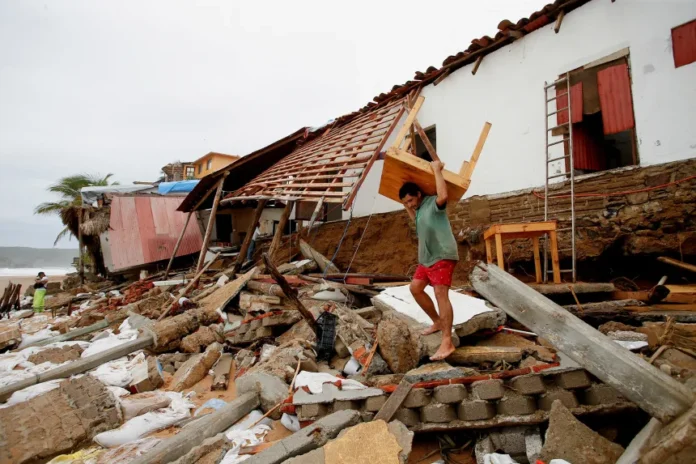Hurricane Erick made a violent landfall early Thursday morning in Mexico’s Oaxaca state, becoming the first major hurricane in recorded history to hit the country before July. The Category 3 storm roared ashore with 125 mph winds, unleashing devastation across coastal towns just 20 miles east of Punta Maldonado.
Striking barely 100 miles east of Acapulco—still recovering from Hurricane Otis in 2023—Erick marks a worrying new chapter in early-season hurricane activity.
A Record-Breaking Storm
Erick intensified at a shocking pace, transforming from a tropical storm into a Category 4 monster with 145 mph winds in just 24 hours. According to meteorologists, this level of rapid intensification is becoming more common as ocean temperatures rise due to climate change driven by fossil fuel pollution.
By the time it made landfall, it had weakened slightly to a Category 3 but still carried a dangerous storm surge, fierce winds, and life-threatening rainfall.
Damage and Danger
Photos from the region show significant destruction. In San Agustinillo, residents waded through debris. A man was seen carrying furniture from what remained of a battered restaurant—an image that speaks to the storm’s force.
Though weakening quickly over Mexico’s mountainous terrain, Erick is still expected to dump heavy rainfall, potentially triggering flash floods and landslides in vulnerable areas. Authorities are urging residents in higher-risk zones to stay alert through Friday.
An Unusually Active Season
Erick is the fifth named storm in the East Pacific since hurricane season began in mid-May and the second hurricane, well ahead of the typical schedule. NOAA reports that the region normally doesn’t see a second hurricane until mid-July.
Meanwhile, the Atlantic hurricane season is off to a quiet start, with no named storms yet and little tropical development expected in the coming days.
Hurricane Erick’s early arrival and explosive growth are a stark reminder of the increasing unpredictability of extreme weather. As storm seasons grow more intense and less predictable, communities along vulnerable coastlines must prepare not just for impact—but for the unexpected.



